How Technology Is Changing the Face of Innovation
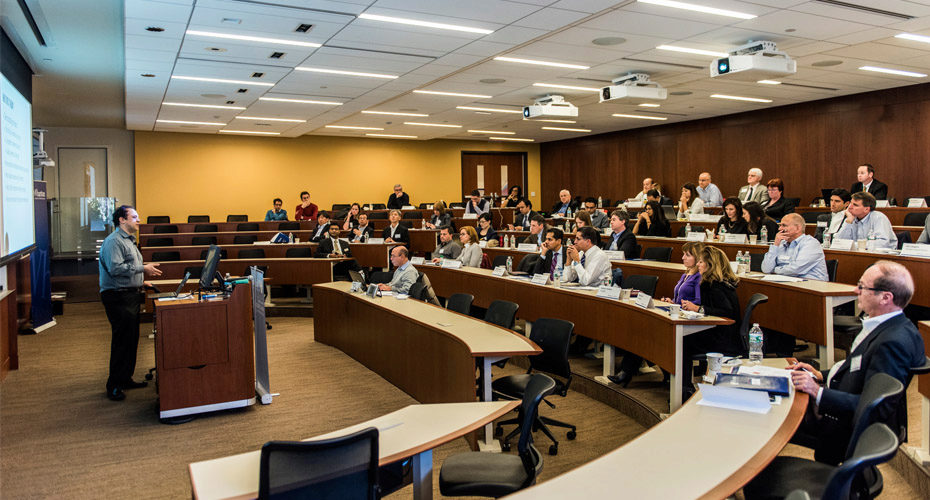
Rapid advances in technology continuously change the way that organizations innovate in three key ways:
- Understanding customer needs. Advances in the behavioral sciences and data analysis enable deeper and faster insights into customer needs, pain points, and adoption behavior.
- Developing solutions. When technology advances enable autonomous cars, the “internet of things,” and creating human tissue with a bioprinter, new market concepts have to emerge that will unlock latent economic value.
- Connection-making for solutions. New tools for collaboration, such as crowdsourcing, external innovation networks, and internal knowledge networks, speed the process of bringing concepts to market.
The Mack Institute’s Fall Conference 2014 focused on improving innovation development and deployment. Held at the Wharton School’s Philadelphia campus, the event featured experts — including Wharton faculty, senior fellows of the institute, and executives from large and small companies — who are actively concerned with the study and application of innovation.
Riding the Technology S-Curve
 Mack Institute Co-director and marketing professor George S. Day began with an overview of how technological advances are “revising the way we understand customers’ needs and the jobs they want to have done,” — a necessity, given the deluge of consumer data that can outstrip the processing ability of corporate marketing departments.
Mack Institute Co-director and marketing professor George S. Day began with an overview of how technological advances are “revising the way we understand customers’ needs and the jobs they want to have done,” — a necessity, given the deluge of consumer data that can outstrip the processing ability of corporate marketing departments.
Technology can help to connect “what is needed with what is possible,” in order to develop solutions faster, Day added. To establish and maintain an edge, however, companies and their partners “need to anticipate” advances in a technology’s “S-curve,” which plots performance improvements against time. This curve progresses through three stages: learning, then accelerated development where performance gains are rapid, followed by a slowdown as diminishing returns are felt.
Larry Huston, founder of 4iNNO and the former innovation leader for Procter & Gamble, built on this point and examined the complexity of the technology “S-curve” development. He noted the importance of considering what advances are ahead, how soon they will be realized, what their impact will be, how a company should respond, and “how should we do it better?”
As an example, he cited the efforts of P&G when the consumer-product manufacturer wanted to create a new makeup product that would meet the unique needs of the Asian market: easy application, while delivering a uniform appearance across a woman’s face. P&G jettisoned the traditional approach of analyzing makeup formulations and their interaction with skin, and instead, in a demonstration of moving along the S-curve, utilized data mining and other technology to look beyond the industry and consider solutions on a global basis.
P&G ultimately drew inspiration from electrostatic paint application systems used in automotive manufacturing, and created a product that delivers a uniform matte-makeup finish to women’s skin. It drove the company’s SK-II product line to a leadership position.
“Consumers didn’t tell us they wanted electrostatic spraying in makeup,” Huston said. “Instead, we found the intersection between what was needed and what was possible.”
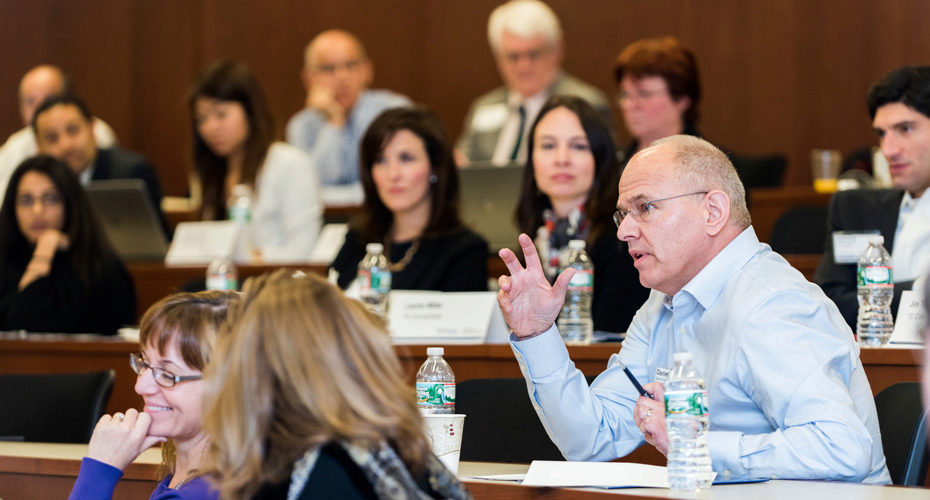 Mack Institute Co-director and Operations and Information Management professor Christian Terwiesch focused on innovation’s impact on institutions of higher learning. He described three forms of innovation: incremental enhancements or extensions of existing brands, significant innovation in current benefits and/or costs by using technology, and, finally, creating new categories or entirely new sources of consumer consumption.
Mack Institute Co-director and Operations and Information Management professor Christian Terwiesch focused on innovation’s impact on institutions of higher learning. He described three forms of innovation: incremental enhancements or extensions of existing brands, significant innovation in current benefits and/or costs by using technology, and, finally, creating new categories or entirely new sources of consumer consumption.
Incremental enhancements in education could include new cases, new courses, and new exams; while significant innovation is represented when institutions utilize technology to serve more students better and/or more efficiently.
The third kind of innovation, new categories, is represented by universities like Cornell and Wharton, which offer customized corporate programs and online certificates.
But teaching has traditionally been a “push” model driven by scale economies, he cautioned, with a cycle that typically involves a long period of learning for students, followed by certification, which is followed by a “waiting” period where the knowledge may not be utilized for a long period of time, if ever.
“There is a mismatch between what is learned and what is used,” said Terwiesch, adding there is also a delay between learning and using.
An alternative model could be represented by “learning on demand,” which he described as a “pull” technology where individuals learn what they need to know when they need to know it: a kind of “just in time” approach.
Examples of this model include low-cost, high-enrollment Massive Open Online Courses (MOOCs), like the ones offered by Coursera, an online platform for open-access classes that are available to audiences around the world.
Coursera offers on-demand learning, shifting the efficiency frontier and helping to narrow the potential mismatch between what business schools are teaching and what graduates actually need at work, added Terwiesch. He said the approach is similar to iTunes in that it “unbundles” the educational package.
Wharton is already collaborating with Coursera, offering a limited number of courses each year. Spread over a wide number of students, it could lower Wharton’s per-student cost significantly by spreading out the university’s “fixed” costs of tenured faculty, development, and other expenses over a wider base of enrollees.
Making Connections and Speeding Adoption
 Leslie Wainwright, chief strategy officer of AVIA, a provider-led innovation accelerator, described how they use technology to connect the power of providers with the potential of entrepreneurs. She opened up the issue of instilling a culture of innovation in healthcare, which is a highly risk-averse sector. But hospitals need some kind of transformation, because they “can’t drive down costs fast enough” to offset the downturn in Medicaid and other revenue, she noted.
Leslie Wainwright, chief strategy officer of AVIA, a provider-led innovation accelerator, described how they use technology to connect the power of providers with the potential of entrepreneurs. She opened up the issue of instilling a culture of innovation in healthcare, which is a highly risk-averse sector. But hospitals need some kind of transformation, because they “can’t drive down costs fast enough” to offset the downturn in Medicaid and other revenue, she noted.
Transforming healthcare, however, will mean more than just a new delivery system — it will also mean building better connections between providers and entrepreneurs.
Venture capital is “flooding” the healthcare segment, surpassing $1.9 billion in 2013 (more than double the level in 2011), added Eric Langshur, the CEO of AVIA. But although there are more than 100 incubators/accelerators across the U.S., few focus on healthcare providers. The challenge for hospitals — which are in the business of providing better care, not assessing technology — is to properly evaluate the new technology and solutions.
“We (AVIA) are in the middle,” Wainwright added. “Hospitals need to step up a bit, and entrepreneurs need to dial back a bit until we reach a state of shared alignment.”
Watch: Langshur and Wainwright describe how Avia matches health systems with entrepreneurs.
Compelling examples of how advances in technology were transforming the innovation process were provided by Richard Thorogood, Vice President of consumer insights for Colgate Palmolive. He argued that too much current research is based on a recall of past events, but much of what we do never makes it to our memories. The challenge is to develop deeper insights that could be scaled up quickly and contextually relevant.
He described some exciting methods that could be applied in developing countries, to let customers describe their choice process in true conversational style. Many methods currently in development use “emotional measurement” technology (since he argued that emotions make 90% of key decisions). These methods use a variety of technologies from brain scans to face recognition. It is unclear whether the results of these methods can be trusted to make big decisions.
Fast Takes
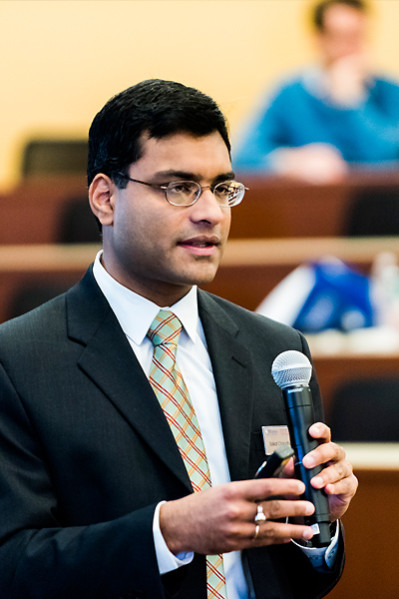 Mack Institute Executive Director and Adjunct Associate Professor of Management Saikat Chaudhuri (ENG’97, W’97) then introduced an innovation in Mack Institute conferences by having two of the faculty researchers funded by the institute briefly describe what they had learned. He began the session by describing the challenges facing pharmaceutical companies.
Mack Institute Executive Director and Adjunct Associate Professor of Management Saikat Chaudhuri (ENG’97, W’97) then introduced an innovation in Mack Institute conferences by having two of the faculty researchers funded by the institute briefly describe what they had learned. He began the session by describing the challenges facing pharmaceutical companies.
The traditional business model for pharmaceuticals focused on classical treatments that met the needs of large populations. Because the treatments could continue for decades, the revenue stream was dependable and sustainable. In that environment, Chaudhuri said, contract-based research made sense, since the timing of the revenues and expenses could be fairly well matched.
Now, however, that classic treatment model is being replaced by disruptive gene-based therapies that incur steep upfront development costs, yet are often administered on a one-time basis, providing years or even a lifetime of benefit. Because this model typically presents a “one-shot,” or short-term, injection of revenue, new research partnerships that share risks and rewards — such as ones between big pharmaceutical companies and universities or startups — should be developed and embraced, Chaudhuri concluded.
In the healthcare field, innovation management has driven a shift in the research and development model of many pharmaceutical companies. They’re moving from an in-house approach to one that is networked and collaborative among a number of partners, noted Assistant Management Professor Rahul Kapoor. But gene-based therapy and other emerging research tends to incur high up-front costs, while the ROI shows up later as downstream development results.
“So a partnership or alliance where risks and rewards are shared tends to be more effective than traditional contract research,” he noted, referring to a common outsourcing arrangement where a third-party organization provides support to pharmaceutical, biotechnology, and other industries in return for fees.
Watch: Rahul Kapoor offers strategies for confronting disruptive technologies.
Assistant professor of management Ethan Mollick then spoke about the way that traditional funding sources like VCs, angels, and incubators are being supplemented — and in some cases eclipsed by — crowdfunding sources like Kickstarter, which give communities the opportunity to support innovation.
Crowdfunding also changes the nature of competition by empowering consumers, he added: “If people don’t like your product, customers will create their own.”
Watch: Ethan Mollick on the importance of crowdfunding for established firms.
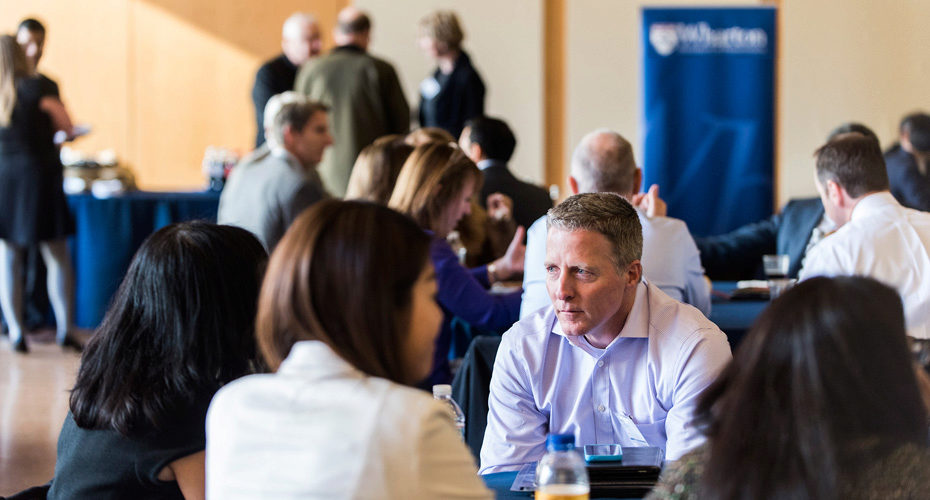
New Modes of Innovation
Huston then spoke about the way that advantaged innovation network connections can boost innovation, noting that contacts between organizations and people, and within and across organizations, can speed the development of ideas.
He used smartphones to highlight the advantages that connectivity can deliver, pointing out that Google’s open-source Android operating system — which accounts for about 80% of smartphones currently being shipped — leverages the strength of about 84 different companies with more than 600 partners. Google’s developer community is much wider than the one that Apple uses for its OS system, and “more minds are working on the same user experience, which delivers more innovation.” In turn, that leads to a faster rate of new-product introductions that are welcomed by the marketplace.
But he cautioned that it’s also important to develop a targeted “innovation playbook” — an approach that many companies have missed. “Build contacts and relationships, and identify nodes and assets,” Huston advised. “Then build a portfolio of relationships, but be specific about what you want to do with those relationships.”
Some companies, like SocialGlimpz, engage consumers to co-create content that can be used for clients’ inbound and outbound marketing. “Mobile communication is ubiquitous and attention spans are short,” noted SocialGlimpz CEO Parry Bedi (WG’12), explaining how his company gathers consumer insights on demand with Web-based videos that max out at 15-seconds, and pictures that feature Twitter-length captions.
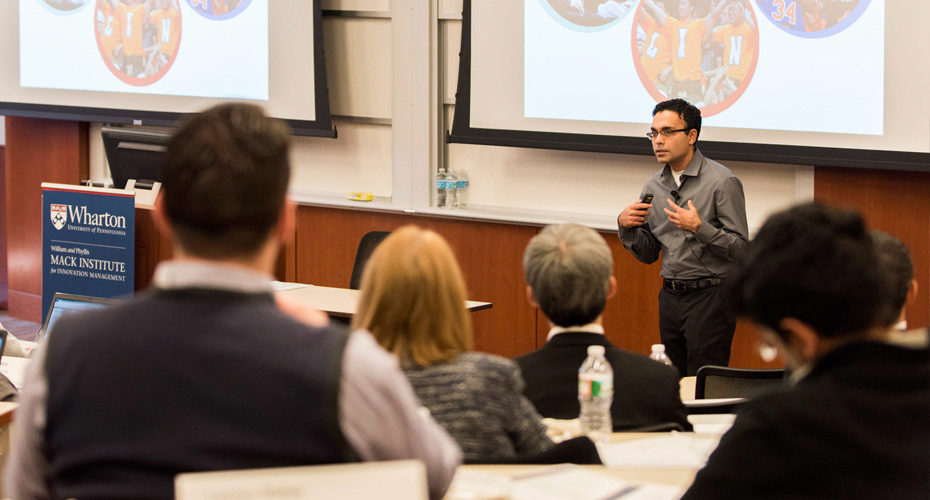 “Visuals are the new language of consumers,” he said, adding that an interactive social media campaign can keep companies in constant contact with consumers and can efficiently gather feedback.
“Visuals are the new language of consumers,” he said, adding that an interactive social media campaign can keep companies in constant contact with consumers and can efficiently gather feedback.
In these and other engagements, SocialGlimpz crowd-sources photos and brief text to connect with individuals, then analyzes the responses.
Traditional interviews take too long, and focus groups are not cost effective, noted Bedi. “The Impact of visuals is transformative, and visuals along with language will soon be the ‘lingua franca’ across cultures and countries,” he added. “Visuals in particular can let brands get closer to customers and discover their unmet needs.”
Watch: Parry Bedi explains why market researchers need to translate their strategies.
Seeing What’s Next: Technology Breakthroughs that Will Change Your Business
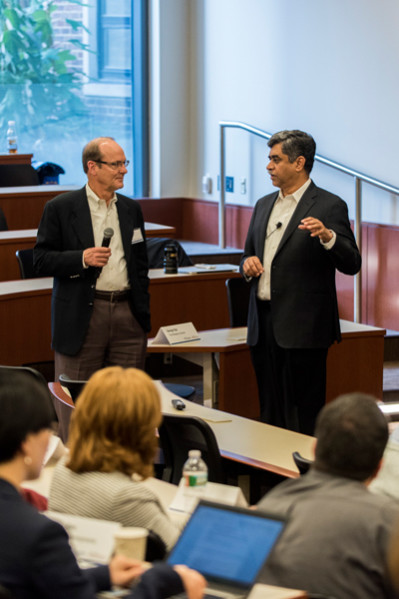 The final session featured senior leaders of technology initiatives in two global companies, looking over the horizon to talk about how technology impacts not just “what is possible,” but how to improve the speed and quality of the connections both inside and outside the organization.
The final session featured senior leaders of technology initiatives in two global companies, looking over the horizon to talk about how technology impacts not just “what is possible,” but how to improve the speed and quality of the connections both inside and outside the organization.
Ram Varadarajan — a senior vice president at CA Technologies, which offers global IT management software and solutions — spoke about harnessing disruptive technology.
“A brand itself no longer attracts a user,” he warned. “It’s the experience with the brand that matters. It’s very easy for a consumer to switch (to another brand),” so companies need to figure how they can connect with users in a manner that is constantly refreshed, instant, and continual.
Characterizing the current business landscape as an “app economy,” Varadarajan noted that Nike has evolved from a sneaker company to a “data-enabled athletic brand that looks for information from customers so Nike can serve them better.”
Apple, for example worked with Nike and other companies to develop a new iPhone app called “Health” that measures a user’s fitness level across a variety of metrics — including sleep and movement — and brings the information into one spot.
Similarly, he added, Amazon was a book seller, but is now an insight-driven delivery service, cloud servicer, and entertainment hub; while Tesco transformed from a U.K. grocer to a global consumer retailer that leverages data and technology to reframe the shopper experience.
“It’s all about connecting with customers on a one-to-one basis, offering great core products and mastering ways to continue to sell the products,” said Varadarajan.
Jim Toth, senior director, Materials Development at TE Connectivity — a global technology leader that provides connectivity and sensor products and solutions — noted that the company’s customers want to be able to click a button and get products from “a 3d printer in a few hours.”
Technological advancements and relatively inexpensive computing power enable companies like TE to “look at materials in new ways,” he said, adding that advanced computer modeling techniques mean that the company can innovate easier and faster by conducting material experimentation and design online.
On a broader scale, the engineering industry itself is moving towards greater collaboration and innovation through initiatives like The Materials Project, an open source database that provides Web-based access to information on known and predicted materials, helping researchers and engineers to remove guesswork from materials design in a variety of applications.
“It’s a new way of conducting industrial research,” said Toth. “We’ll see more advances (The Materials Project has already screened properties of some 25,000 materials for Lithium-ion batteries) and more collaboration between universities and industry. Having part ownership of intellectual property is better than not having any at all.”
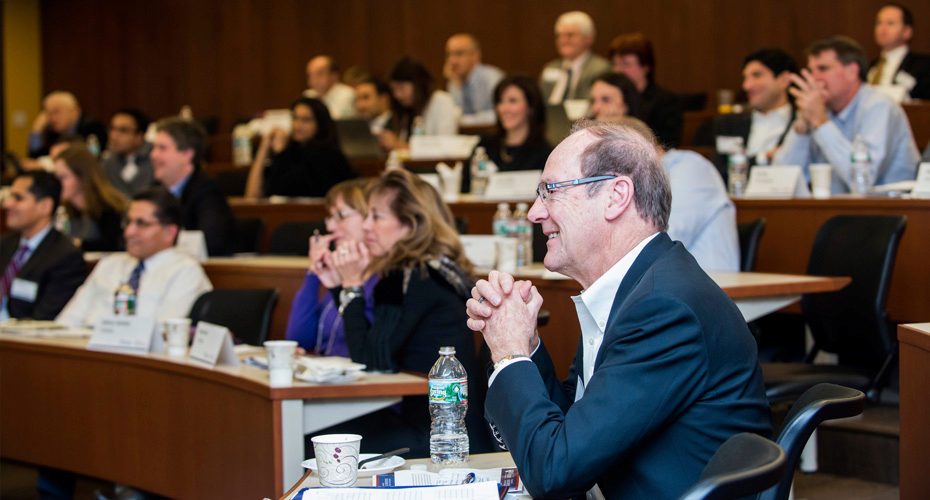
George Day wrapped up the conference, reminding the gathering that Moore’s law — which predicts that computer processing power will double every two years — is helping to drive connections and “is changing everything. The future is here, but it’s unevenly distributed. What’s possible is being expanded, and new capabilities mean that people can imagine new possibilities and new needs.”



